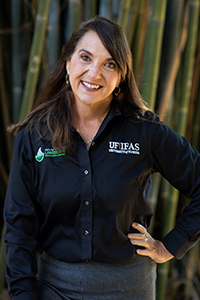Wendy's Wanderings
December 8, 2022
Checking a List, and Checking it Twice
The holiday season is here. It is a busy time of year for many folks. I think of it as the season of lists: shopping list, gift lists, and Santa's naughty or nice list. As you are placing checkmarks next to people's names, I would like you to consider another list, the UF/IFAS Assessment of Non-native Plants in Florida's Natural Areas list. This assessment uses standardized tools to evaluate the invasion risk of nonnative plant species in Florida.
As a gardener you have probably encountered plenty of invasive species here in Florida. Invasive plants are those that are nonnative to an area, have been introduced, and are likely to cause environmental or economic harm. It is important to use the correct terminology for invasive species, especially when sharing information with others. To make sure you are using the right words and definitions for invasive species, refer to this document on invasive species terminology by Dr. Basil Iannone et. al, Standardized Invasive Species Terminology for Effective Outreach Education.
We also know that it is important to properly identify plants so that you can determine the invasive status of a plant. We check the list, and we check it twice, because the statuses are updated often. Researchers have been reevaluating plant species based on new data on climate suitability and potential range changes.
As I recently scanned the UF/IFAS Assessment of Non-native Plants in Florida's Natural Areas list, I was surprised to see which plants were making the list. Certain ones I am not shocked by since I have personally observed how destructive they can be, like blue sky vine (Thunbergia grandiflora) and pothos (Epipremnum aureum). But there are a few recent listings that include old favorite Florida landscape plants such as weeping bottle brush (Melaleuca viminalis), liriope (Liriope muscari), and bush allamanda (Allamanda neriifolia). These commonly used Florida landscape plants are now considered to have a high risk of invasion and can't be recommended. It will be sad to not recommend some of our old standbys but it is what is best for Florida's ecology. Think of it as an opportunity to try new Florida natives or Florida-Friendly plants in the coming new year.

